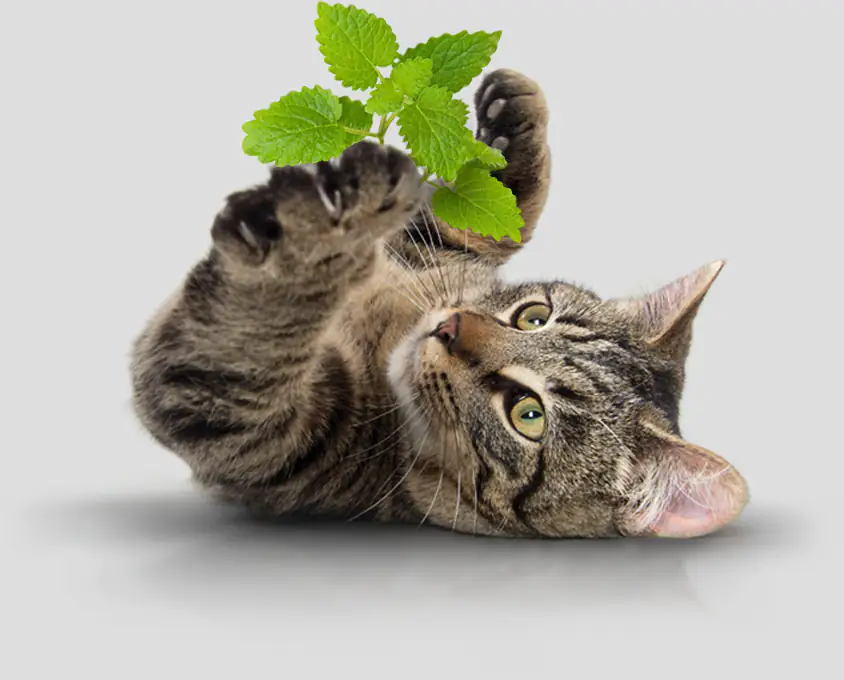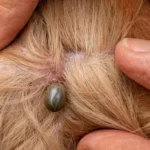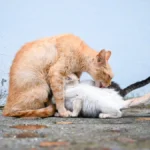Catnip, also known as Nepeta cataria, is a perennial herb that belongs to the mint family. This fragrant plant has a long-standing history of intriguing and captivating cats. Let’s delve into the fascinating world of catnip and its interaction with our feline friends and know when can cats eat catnip.


Understanding Catnip Sensitivity
Catnip’s Effect on Cats
Catnip contains a chemical compound called nepetalactone, which triggers a unique response in many cats. When cats come into contact with catnip, it often elicits behaviors such as rolling, rubbing, purring, and playful antics. The effects of catnip can be quite entertaining to witness.
The Science Behind Catnip’s Effects
The olfactory receptors in a cat’s nose detect the nepetalactone in catnip, sending signals to the brain that stimulate certain areas, including the amygdala and hypothalamus. These areas are associated with emotions and behaviors in cats, explaining their reactions to catnip.
When Can Cats Eat Catnip?
Age Restrictions for Catnip Consumption
Generally, it is recommended to introduce catnip to cats that are at least six months old. Young kittens may not exhibit a response to catnip until they reach sexual maturity. It is best to wait until they are older to ensure they can fully enjoy the effects of catnip.
Introducing Catnip to Kittens
When introducing catnip to kittens, it’s important to monitor their reactions. Start by offering small amounts of dried catnip or catnip-infused toys. Observe their behavior and response to ensure they are not overwhelmed. Some kittens may display little to no reaction initially.
Safety Considerations for Older Cats
While catnip is generally safe for cats, it’s essential to consider the overall health and any pre-existing conditions of older cats. If your senior cat has any health concerns or sensitivities, consult with your veterinarian before introducing catnip to their environment.
As a responsible pet owner, it’s crucial to provide appropriate supervision and ensure that catnip is consumed in moderation to prevent excessive excitement or overstimulation.
Catnip, with its irresistible allure to cats, can provide delightful moments of feline playfulness and entertainment. However, it’s important to monitor catnip consumption and ensure its responsible use. Let’s explore dosage recommendations, signs of overindulgence, alternatives, and the importance of responsible catnip use.
Monitoring Catnip Consumption
Dosage Recommendations
When offering catnip to your furry friend, it’s best to start with small amounts. For dried catnip, a pinch or a sprinkle on toys or scratching posts is usually sufficient. Pay attention to your cat’s reaction and adjust the dosage accordingly. Remember, moderation is key to prevent overwhelming or excessive behavior.
Signs of Overindulgence or Negative Reactions
While most cats enjoy catnip, it’s essential to monitor their behavior for any signs of overindulgence. Some cats may become overly excitable, restless, or even aggressive when exposed to excessive amounts of catnip. Additionally, a small percentage of cats may have negative reactions, such as vomiting or diarrhea. If you notice any adverse effects, discontinue use and consult your veterinarian.
Catnip and Potential Health Concerns
While catnip is generally safe for cats, it’s important to consider individual cat health conditions. Cats with certain medical conditions or sensitivities may need to avoid catnip. Always consult with your veterinarian if you have concerns about your cat’s health before introducing catnip.
Catnip Alternatives
Other Plants that Stimulate Cats
If your cat is not particularly responsive to catnip or you want to offer variety, there are other plants that can stimulate feline interest. Silver vine, valerian root, and honeysuckle are examples of alternative plants that can evoke similar responses in cats. Experiment with different options to find what captivates your cat’s attention.
Toys and Products that Mimic Catnip Effects
To provide enrichment without actual catnip, there are numerous toys and products available that mimic catnip’s effects. These may include toys with hidden compartments for catnip or toys infused with synthetic catnip-like scents. These alternatives can offer stimulating experiences for your cat.
Engaging with Cats Without Catnip
Remember that catnip is just one tool for feline enrichment. Engaging with your cat through interactive play, puzzle toys, and environmental stimuli can provide mental and physical stimulation. Rotate toys regularly and create an enriching environment to keep your cat entertained and engaged.
Conclusion
In conclusion, monitoring catnip consumption and using it responsibly are essential for your cat’s well-being and enjoyment. By following dosage recommendations, being aware of signs of overindulgence, and considering alternatives, you can provide enriching experiences for your feline friend.
Remember, each cat is unique, and their response to catnip may vary. Pay attention to your cat’s preferences and behavior, and always prioritize their safety and health.
Frequently Asked Questions About Cats & Catnip
What age can kittens have catnip?
Kittens can start showing a response to catnip as early as 8 to 12 weeks of age. However, their sensitivity to catnip can vary. Some kittens may not show a strong reaction until they are a few months older. It’s important to introduce catnip gradually and in small amounts to kittens, as their developing systems may be more sensitive. Observe your kitten’s behavior when introducing catnip and ensure they are responding positively without any signs of overstimulation.What age can adult cats have catnip?
Adult cats can have catnip at any age. Most cats continue to be responsive to catnip throughout their lives. If your cat has shown a positive reaction to catnip before, you can continue to offer it as a source of stimulation and enrichment. However, it’s still important to monitor your cat’s behavior and provide catnip in moderation. Remember that not all cats are equally sensitive to catnip, and some may have a stronger or more subtle response than others. As responsible pet owners, it’s our duty to ensure the well-being and safety of our cats, so observe their behavior and adjust the amount of catnip accordingly.What happens when cats eat catnip?
When cats eat catnip, it can have a calming and stimulating effect on them. They may exhibit behaviors such as rolling, rubbing, and increased playfulness.Can cats overdose on catnip?
No, cats cannot overdose on catnip. Catnip is generally considered safe for cats, and they will naturally limit their consumption to a comfortable level.Does catnip get cats high?
Catnip can induce a euphoric response in cats, often described as getting them “high.” It stimulates their senses and triggers playful behaviors, but it is not harmful or addictive.How to give cats catnip?
Catnip can be given to cats in various forms, such as dried leaves, sprays, or infused toys. Simply sprinkle or apply a small amount of catnip to a toy or scratching post to encourage their interaction.How long does catnip last?
The effects of catnip can vary among cats, but they typically last for about 10-15 minutes. After that, cats may become temporarily immune to its effects for a period of time.Can all cats enjoy catnip?
Not all cats are sensitive to catnip. The sensitivity is inherited, and approximately 50-75% of cats exhibit a response to catnip. It is a genetic trait, so some cats may not be affected by it.At what age can kittens start experiencing catnip?
Kittens generally start responding to catnip when they are around 3 to 6 months old. However, some kittens may not show a response until they are older.Is catnip safe for cats to eat?
Yes, catnip is safe for cats to eat. In fact, ingesting catnip can provide a more intense response than just smelling it. However, it’s best to offer catnip in moderation to prevent overstimulation.How often can I give catnip to my cat?
It’s recommended to give catnip to your cat once or twice a week to keep the effects enjoyable and prevent them from becoming immune to its effects.Are there any side effects of catnip?
Catnip is generally safe for cats, and there are no known severe side effects. However, some cats may become overly excited or aggressive, so it’s important to monitor their behavior during and after catnip exposure.Can catnip be used to calm an anxious or stressed cat?
Yes, catnip can have a calming effect on some cats. It can help reduce anxiety and provide mental stimulation, but its effectiveness may vary from cat to cat. If your cat is experiencing significant anxiety, consult with a veterinarian for appropriate solutions.









